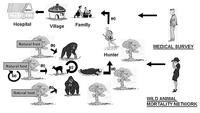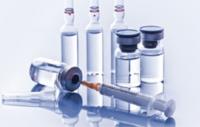-
Emergency water treatment guidelines questioned
During floods and other emergencies, treating water for drinking is a must, but how to do it is up for debate. The Environmental Protection Agency’s (EPA’s) recommendations for treating water after a natural disaster or other emergencies call for more chlorine bleach than is necessary to kill disease-causing pathogens and are often impractical to carry out, a new study has found.
-
-
Detecting and defeating radiological threats
Brookhaven National Laboratory’s Radiological Assistance Program (RAP) team works to stay ahead of any radiological threats by using many detection tools that have become increasingly sophisticated and user-friendly. During a deployment, researchers and technicians with backgrounds in various aspects of radiological controls and analysis conduct field monitoring and environmental sampling, assessment, and documentation activities to help decision makers choose appropriate protective actions for the safety of both the public and first responders.
-
-
Amid controversy, Boston City council debates banning Level 4 Biolab
Boston has long been seen as “America’s Medical Capital,” but that may soon change if the city passes a measure to ban Level 4 Biolab disease research at Boston University’s National Emerging Infectious Diseases Laboratory – research which includes deadly and untreatable strains that could decimate an exposed urban population in the event of an accident or terrorist activity.
-
-
Ebola outbreak highlights need for global surveillance strategies

According to the World Health Organization (WHO), the deadly Ebola virus can cause mortality rates up to 90 percent of those individuals who contract the disease. No cure or vaccine exists for Ebola hemorrhagic fever and public health officials are concerned about further spread of the virus in the region. A comprehensive review was published yesterday examining the current state of knowledge of the deadly Ebola and Marburg virus. The review calls for improved global surveillance strategies to combat the emergence of infectious diseases such as the recent outbreak of Ebola in West Africa that has claimed the lives of 122 people in the countries of Guinea and Liberia.
-
-
New MRSA superbug discovered in Brazil
Researchers have identified a new superbug that caused a bloodstream infection in Brazilian patients. The new superbug is part of a class of highly-resistant bacteria known as methicillin-resistant Staphylococcus aureus, or MRSA, which is a major cause of hospital and community-associated infections. The superbug has also acquired high levels of resistance to vancomycin, the most common and least expensive antibiotic used to treat severe MRSA infections worldwide. The most worrisome aspect of the discovery is that genomic analyses indicated that this novel vancomycin-resistant MRSA superbug belongs to a genetic lineage that is commonly found outside hospitals (designated community-associated MRSA).
-
-
Rearming penicillin for the twenty-first century
Penicillin, one of the scientific marvels of the twentieth century, is currently losing a lot of battles it once won against bacterial infections. Scientists, however, have just reported a new approach to restoring its combat effectiveness, even against so-called “superbugs.”
-
-
Promising agents defeat superbug defenses
In the fight against “superbugs,” scientists have discovered a class of agents, called metallopolymers, which can make some of the most notorious strains vulnerable to the same antibiotics that they once handily shrugged off.
-
-
2014 edition of updated first responder biodetection technology guide available
A 2014 update to a detailed product guide listing biodetection technologies and sampling products is now available. The updated digest, Biodetection Technologies for First Responders: 2014, provides a comprehensive compilation of commercially available detection devices and products published to help first responders when purchasing equipment and supplies needed to rapidly assess biological threats.
-
-
Britons worry that new EU food inspection rules would risk U.K. food safety
The European Food Safety Authority(EFSA) in June will introduce a new Europe-wide food inspection regime, arguing that there is a need to modernize the food inspection process. The EFSA plans to reduce seventy pieces of detailed regulation down to a framework of five overarching laws to “reduce the burden on business.”Among other things, the new rules will replace laws that list diseases banned from the meat supply with a more general requirement on safety, health, and welfare. The EFSA claims that many of the diseases and parasites inspectors currently find are harmless to humans and are not considered major animal diseases. U.K. consumer advocates, meat inspectors, and veterinarians say the new rules threaten the safety of the U.K. food supply.
-
-
Drug-resistant TB emerges as a global threat
Drug-resistant tuberculosis (DR-TB) has become a global threat,with multidrug resistant TB causing about 500,000 new cases every year. Experts say the problem requires cooperation among governments, pharmaceuticals, and academics to develop effective treatments.
-
-
W.Va. residents still wary about their drinking water
The January 2014 chemical spill in West Virginia, which contaminated the drinking water of 300,000 residents, has changed how residents use public water. Authorities claimed the water was safe for consumption on 13 January, since MCHM levels had dropped below a federal safety threshold of one part per million. Residents remain skeptical, with some collecting rain water, and other relying on clean water distributed by non-profits.
-
-
Lead ammunition should be replaced by steel in shooting sports: experts
Researchers say that Olympic athletes specializing in shooting use one thousand cartridges per week and scatter some 1.3 tons of lead yearly, with harmful effects for surrounding animals and agricultural land. The researchers urge the International Olympic Committee and other sports organizations to replace lead ammunition with steel, which is non-toxic and contains similar technical characteristics.
-
-
Positive results reported from single dose anthrax vaccine studies

Immunovaccine and Pfenex announced positive results from anthrax challenge studies in rabbits using Pfenex’s mutant recombinant Protective Antigen (mrPA) formulated with Immunovaccine’s DepoVax delivery system. Data demonstrates 100 percent protection against a lethal anthrax challenge in animals after vaccination with as little as 0.33 microgram of mutant recombinant Protective Antigen. Dose response observed in the first twenty-eight days following vaccination.
-
-
Bacteriophage “cocktail” eradicates 99 percent of E. coli in meat, spinach
Treating food products with select bacteriophages — viruses which target and kill bacteria — could significantly reduce concentrations of E. coli, a new study shows. An injection of bacteriophages — also known informally as “phages” — nearly eradicated a toxin-producing strain of E. coli in contaminated spinach and ground beef, in some cases decreasing E. coli concentrations by about 99 percent. Interest in using phages as antibacterial treatments has increased with the rise of antibiotic-resistant bacteria.
-
-
New drone-based system improves safety of dealing with nuclear hazards
Hazardous nuclear events have the potential to cause widespread damage to individuals and the environment. Getting close enough to these incidents to accurately assess the problem can be extremely dangerous. Following the incident at the Fukushima power plant in Japan in 2011, for example, helicopter pilots assessing the site were exposed to significant amounts of radiation. Researchers have developed a new system for remote and accurate assessment of dangerous nuclear accident sites.
-
More headlines
The long view
Ransomware Attacks: Death Threats, Endangered Patients and Millions of Dollars in Damages
A ransomware attack on Change Healthcare, a company that processes 15 billion health care transactions annually and deals with 1 in 3 patient records in the United States, is continuing to cause massive disruptions nearly three weeks later. The incident, which started on February 21, has been called the “most significant cyberattack on the U.S. health care system” by the American Hospital Association. It is just the latest example of an increasing trend.
